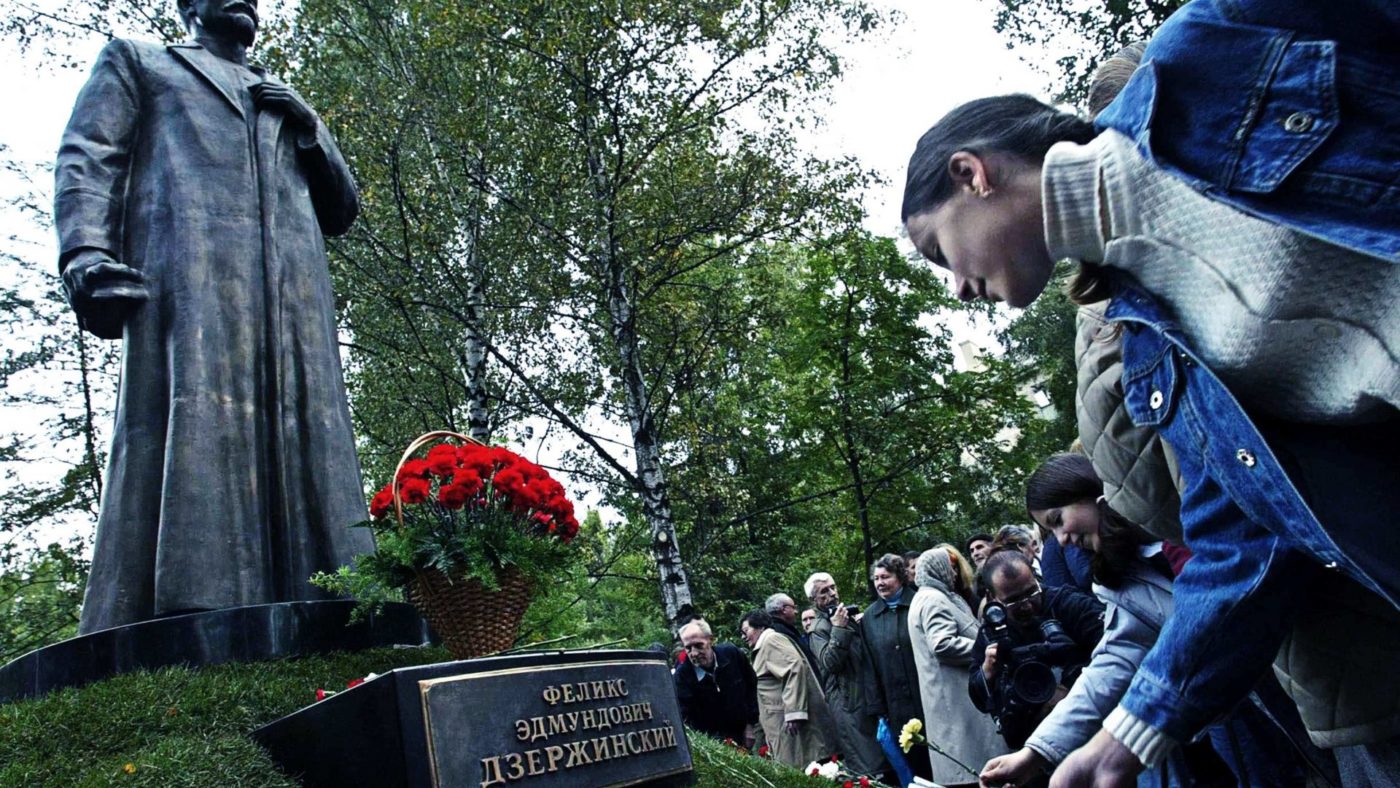Back in 1991, the removal of Felix Dzerzhinsky’s statue from in front of the KGB’s headquarters was an iconic moment, symbolising an end to the repressive reign of the secret police that he had founded after the October Revolution. So why do so many Muscovites want to see ‘Iron Felix’ once more given pride of place on Lubyanka Square?
Muscovites are currently voting in a referendum instigated – on the surface at least – by a group of pro-Kremlin public figures who appealed for the statue’s return earlier this month. Alluding to Alexei Navalny’s recent return from Germany, they argued that Dzerzhinsky should be celebrated for his ability to uncover plots against Russia cooked up in the West.
This is only the most recent of several restoration efforts in the last decade, including in 2015 when polls showed 51% of Muscovites and 49% of Russians supported the return of the statue to Lubyanka Square. Less quantifiably, I remember translating the script for the City Sightseeing Moscow Bus Tour in 2012 and puzzling over how and whether to translate a line stating that many Muscovites wanted the statue returned, allegedly for aesthetic reasons. To outsiders this might seem a perplexing position, given that Russians have had over 30 years to acquaint themselves with the historical realities of Dzerzhinsky’s crimes.
But it would be wrong to immediately equate support for the return of Dzerzhinsky’s statue to support for the Red Terror or even for Dzerzhinsky the man, beyond his attendant symbolism. As the historian Roman Shlyakhtin has skilfully demonstrated in an article focused on Lenin statues, in many cases public approval or disapproval of this or that Soviet figure is rather beside the point.
The support for Soviet statues isn’t really about the person so much as what – or rather when – they symbolise. Desire for the return or preservation of Soviet-era statues is better understood as an expression of nostalgia for the time when these monuments were part of the urban landscape, a time that coincided with many people’s rose-tinted youth, and a time before the traumatic collapse of the USSR, when certainties disappeared overnight.
Putin’s memory project
While Boris Yeltsin struggled to construct a workable anti-communist memory regime, Vladimir Putin has been very muscular in creating a patchwork historical narrative, incorporating many elements of the Soviet past in a de-ideologised way. Naturally, Soviet heroism in World War Two has played a standout role, giving Russians a reason to feel proud and patriotic again. The prevalence of the war has also had a positive effect on the legacy of another Soviet tyrant – Joseph Stalin.
In 2019, a record 70% of Russians approved of Stalin’s role in Russian history, and he often scores highly in polls of Russia’s greatest historical figures. In one such contest in 2008, Stalin appeared to win outright before the authorities allegedly intervened in favour of Aleksandr Nevsky, the medieval knight who fought off German and Swedish invaders. For the authorities, he is a historical figure altogether less divisive and less problematic than Stalin.
Indeed, in the current referendum over Dzerzhinsky’s monument, Muscovites have a choice between a statue to the Cheka’s founder or to Nevsky, with the Moscow mayoralty confirming their support for the latter. This preference reflects the Russian authorities’ sensitivity to negotiating between different (culturally Russian) memories in their uses of history. The state’s obsession with history is in large part an attempt to create a unifying national idea in a country where it is impossible to unite the nation around civic identity, ethno-nationalism, or ideology. But this rather begs the question: why offer the referendum in the first place when they could have just erected a statue to Nevsky?
The answer to this question is less about nation-building and more about staying in power. Russian authorities do not just use history to legitimise the current regime, but also to delegitimise rivals and distract from political problems. The Dzerzhinsky referendum was launched to distract people – especially oppositionists – from Alexei Navalny’s arrest and his release of the Putin’s Palace investigation, which revealed corruption on an epic scale. Alongside this referendum, there has also been an ongoing and ludicrous court case, in which Navalny was found guilty of insulting the honour of a World War II veteran.
Ultimately then, the Dzerzhinsky referendum reveals a more complicated and political understanding of the past among the Russian people and state than just a penchant for executioners. But the use of the past as a diversionary tactic also conveys an important message about the Kremlin today. In the accusatory words of the man this referendum was set up to sidetrack:
“You use the memory (of the war and past) because you can’t talk about the present. People want to talk about poverty, inequality, corruption – but you have nothing to say.”
Click here to subscribe to our daily briefing – the best pieces from CapX and across the web.
CapX depends on the generosity of its readers. If you value what we do, please consider making a donation.


